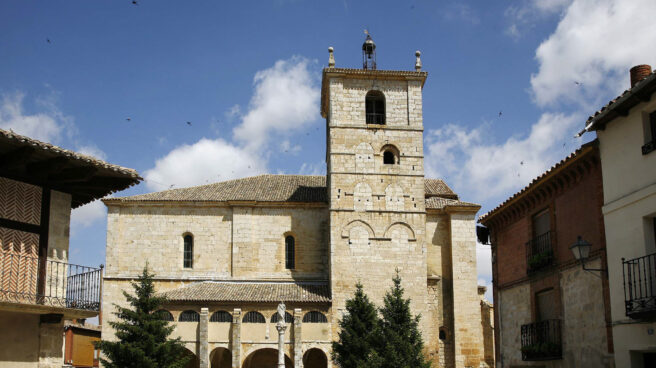

Hermitage Astudillo (Palencia)
“There is nothing hidden that will not be revealed,” says the Gospel of Luke. And as if it was a premonition, it was San Lucas woodcarving stolen in 1979 in Astudillo (Palencia), who is now in Italy 44 years later.
It was a July night in 1979. The next day the Church of Santa Eugenia de Astudillo (Palencia) he woke up with many empty seats in his main altarpiece, a work attributed to Gilles de Siloé, one of the greatest exponents of Latin American sculpture of the 15th and early 16th centuries. The four evangelists on the predella, the apostles on the cloak, and the silver censer were missing.
The village priest raised the alarm, and an investigation allowed the theft is attributed to the famous thief Eric the Belgianbut that was the only thing that could be installed.
For four decades, nothing more was heard from him. Until now. The Artistic Heritage Unit of the Guardia Civil, based in Madrid, managed to find a clue to one of the stolen works, a San Lucas wood carving (16th century), when it was to be auctioned off in Italy.
The auction stopped and, as expected, Newspaper PalentinoCourt no. 2 of Palencia, at the request of the Public Prosecutor, issued a euro warrant requesting that the item be returned to Spain so that it can return to Astudillo, even if it is in storage, because the parish will no longer be the owner.
This is explained by diocesan heritage delegate José Luis Calvo, who details EFE that it was he himself who in August 2021 sent to the Civil Guard a file with an inventory of the altarpiece and several old photographs of the stolen items so that the search would not be forgotten. This is something that is done on a regular basis so as not to lose the thread and because fate has shown that “in the end everything is revealed.”
Calvo emphasizes that not only These are “very important works”. artistic and religious level, but also They have great sentimental value for neighbors.
At the moment, only the news of the find, the satisfaction is capital, although the desire would be come back to see the piece in its place. The diocese will work in the following direction: “Let’s see if we are lucky and the work will return to the diocese and Astudillo again,” admits José Luis Calvo, although he needs to be patient.
You know because there are precedents. On this occasion, a figurine of San Lucas stolen 44 years ago was found in Italy, and, as happened in 2000 with the Calvary of the Skete of Torre Marte, also in Astudillo, in the diocese of Palencia, they are preparing for a long process. . Calvary took four years to return to the monastery.
Now the procedure is the same, piece must be declared by the government that after the completion of all procedures, he will become its owner.
And once in Spain, the diocese of Palencia will ask the government to take him to Astudillo to take the place where he never should have left.
More fortunate was a 16th-century polychrome panel attributed to Juan de Borgoña, stolen in 1979 along with the altarpiece of the Astudillo hermitage of which it was part and which was discovered by the National Police in Zaragoza in 2017.
“This time the works didn’t leave Spain and the process was easier,” says Calvo, who was in charge of getting the work in Astudillo that same year.
Many are still missing. In Paredes de Nava, in Fromiste, twelve Spanish-Flemish tables from the Santa Maria altarpiece, also stolen in 1980 by Eric Belgian.
But also many others have been restored. A 16th-century table, painted in oil by Alonso Berruguete, stolen from the church of Lantadilla in the early sixties; the cantoral of the cathedral of Palencia is stolen in the same decade; a high relief in the church of Santa María de Becerril de Campos lists Calvo convinced that one day there will be news of his whereabouts because “The Guardia Civil and the National Police are doing a great job,” he concludes.
Source: El Independiente